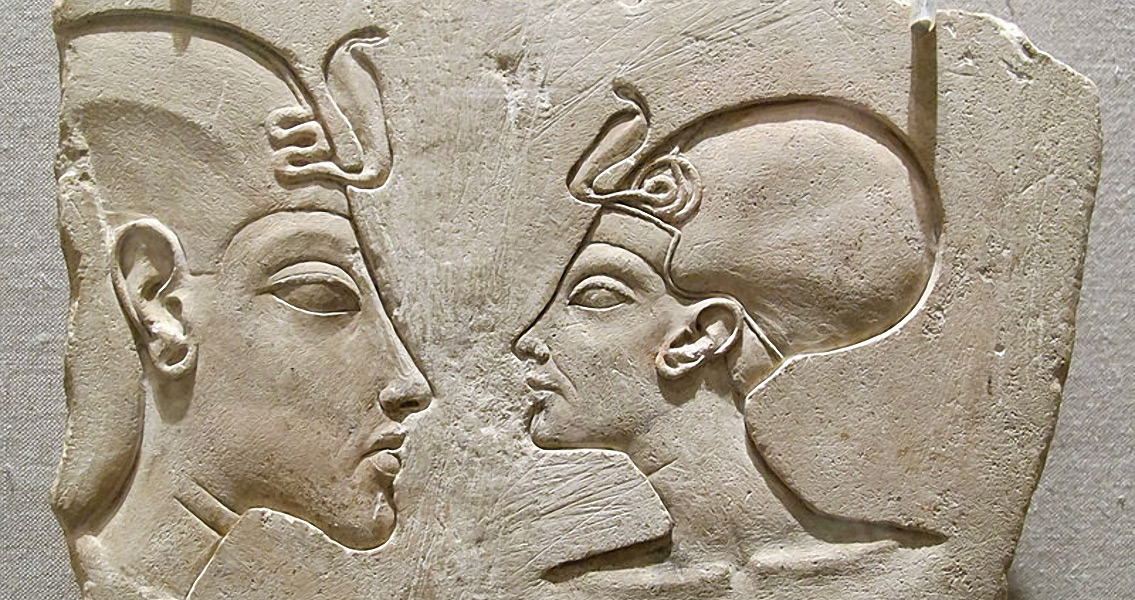<![CDATA[Archaeologist Nicholas Reeves from the University of Arizona claims to have found a hidden door in king Tutankhamun’s burial chamber that leads to the tomb of his father’s wife Nefertiti. The surprising discovery was made possible by a set of scans of the king’s tomb by the Spanish preservation company, Factum Arte, the BBC reports. Reeves told the BBC that while he was examining the scans a few months ago he found what he thought were the marks of two doors. Since then he has been looking for more evidence that there were indeed doors there. If Reeves’ suggestion is confirmed, it could support the hypothesis that Nefertiti was actually Tutankhamun’s mother, rather than his stepmother. Reeves details in a paper on the discovery that the scans revealed two “ghosts” of doors that had been blocked up by the tomb’s builders. One of these doors possibly led to the queen’s burial chamber and the other to a storage room. The burial chamber, if there is one, is north of Tutankhamun’s chamber, the Daily Mail quotes Reeves as saying. He argues that this position of the hidden chamber, to the right of the tomb’s entrance shaft, is a much more typical feature of the tombs built for Egyptian queens than for kings. What’s more, Reeves goes on in the paper, the size of Tutankhamun’s burial chamber is “less than appropriate for a king’s burial of the Eighteenth Dynasty.” he suggests that the chamber in which Tutankhamun’s sarcophagus was placed was in fact an antechamber to the tomb of the queen. In support of his suggestions, Reeves points out the unusual richness of the furnishings in Tutankhamun’s chamber, especially when compared to the relative simplicity of the rest of the tomb. This richness and the likelihood that a lot of the objects that adorn the place were taken from older kings and reused point to the suggestion that the boy-king’s death was so sudden that undertakers had to improvise with his tomb. What is perhaps more fascinating, however, is that according to Reeves, scientists have established that most of the objects in the chamber were initially prepared for Akhenaten’s co-regent – an unknown person who may well have been Nefertiti. So, it could be that the tomb was initially built to house Nefertiti's body, but when Tutankhamun died suddenly an additional chamber was built at the tomb to house his remains. The suggestion may seem bold to many but if further research proves it, it would certainly take the egyptology world by storm. Nefertiti is perhaps the most famous ancient Egyptian queen. She is believed to have had a big part to play in the reign of her husband, religious reformer Akhenaten, and some even claim he predeceased her and she ruled as co-regent with his son Tutankhamun. While the dominant opinion among egyptologists is that Nefertiti and Akhenaten only had daughters – six of them – one French researcher recently challenged the conclusions based on previous genetic research. Two years ago at a speech at Harvard’s Science Center, Marc Gabolde explained that the DNA evidence pointing towards the parents of Tutankhamun being Akhenaten and a sister of his has been interpreted incorrectly. The genetic closeness between the DNA of Tutankhamun’s parents, he says, as quoted by website io9, was a result of three generations of marriages between first cousins. Because of this incestual practice, the third generation of first cousins – i.e. Akhenaten and Nefertiti – would have had DNA similar to that of siblings. As such, Akhenaten and Nefertiti could have been Tutankhamun's father and mother. For more information: “The Burial of Nefertiti?” ]]>
Researcher Claims He’s Found Nefertiti’s Tomb
